Climate change and Atmosphere
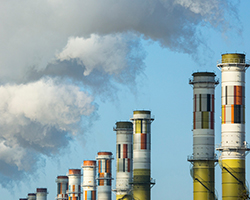
Climate change and Atmosphere
Research on preparing for environmental and climate changes through climate modeling, transport and fate study of air pollutants, and the development of air pollutant purification catalysts
- Soil Environment LaboratoryProf. Kyoung-Woong Kim
- Hydro AI LaboratoryProf. Hyunglok Kim
- Atmospheric Trace Molecule Sensing LaboratoryProf. Kyung-Eun Min
- Aerosol Technology and Monitoring LaboratoryProf. Kihong Park
- Atmospheric Chemical Information Research LaboratoryProf. Chul-Han Song
- Climate Analysis and Modeling LaboratoryProf. Jinho Yoon
- Trace Metal Biogeochemistry LaboratoryProf. Seunghee Han
- Earth Materials Science LaboratoryProf. Huijeong Hwang
Soil Environment Laboratory
Prof. Kyoung-Woong Kim
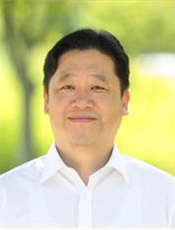
Research Fields
- Prediction of geochemical behavior of pollutants
- Development of eco-friendly soil/groundwater remediation techniques
- Development of ecosystem restoration technologies in response to the climate change
- Development of remediation techniques for arsenic contaminated soil
Hydro AI Laboratory
Prof. Hyunglok Kim

Research Fields
- Climate change and human activities are increasing uncertainties in water resource management and natural disaster predictions. At our Hydro AI Lab, we use remote sensing, land surface models, and AI/machine learning to investigate the complex interactions between land surfaces and the atmosphere in response to climate change. Our goal is to improve the precision of natural disaster predictions and water resource management. We achieve this through the generation of new remote sensing datasets and algorithms, enhancement of surface models, and utilization of high-performance computing for global-scale land surface modeling.
- Machine Learning (Shallow Machine Learning, Deep Learning, Bayesian Machine Learning)
- Satellite Remote Sensing (Microwave, GNSS)
- Land Surface Models (Parallel Computing with HPC)
- Data Assimilation (Ensemble Kalman Filter, Particle Filter)
- Global Water Cycle, Water Balance Model (MCMC Sampling Approach)
- Land-atmosphere Interaction (Land Information System from NASA)
- Impact of Human Activities on Earth System
- Uncertainty Analysis (Bayesian Inference, Triple Collocation Analysis)
Atmospheric Trace Molecule Sensing Laboratory
Prof. Kyung-Eun Min

Research Fields
- Investigations on the controllers in air quality degradation (aerosol and ozone)
- Quantifying the source strengths of the climate changing drivers
- Development of the state-of-the-art instrument for trace level air pollutant monitoring
- Intensive field measurements (ground-, ship- and air-borne)
- Assessment of the effectiveness of climate and air quality policies
Aerosol Technology and Monitoring Laboratory
Prof. Kihong Park

Research Fields
- Development of aerosol generation and measurement technology
- PM2.5 monitoring and sources
- Atmospheric new particle formation (NPF)
- Construction of PM2.5 toxicity
- AI-based prediction of NPF and aerosols
Atmospheric Chemical Information Research Laboratory
Prof. Chul-Han Song
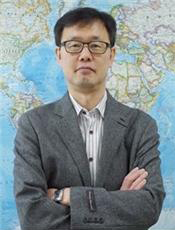
Research Fields
- Short- and medium-range forecasting of particulate matter
- Development of the integrated system of air quality modeling system and satellite data
- Prediction of air quality using a 3-D chemical transport model
- Development of forecasting model using artificial intelligence
- Research on multi-phase chemical reactions of aerosols
Climate Analysis and Modeling Laboratory
Prof. Jinho Yoon
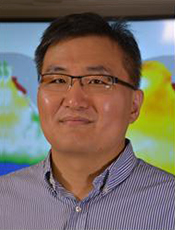
Research Fields
- Anthropogenic (man-made) climate change vs. Natural climate variability
- Understanding Weather-Climate Extremes
- Aerosol-Cloud-Precipitation interaction
- Development and analysis of Earth System Modeling
- Geoengineering
Trace Metal Biogeochemistry Laboratory
Prof. Seunghee Han
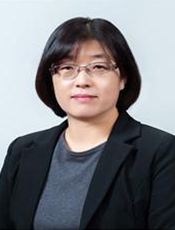
Research Fields
- Biogeochemical cycling of trace metals
- Climate change effects on trace metal cycling
- Metal-mineral biogeochemical interactions
- Atmospheric deposition of trace metals
- Materials for trace element remediation and recovery
Earth Materials Science Laboratory
Prof. Huijeong Hwang
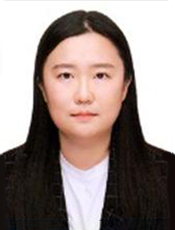
Research Fields
- Extreme condition science
- Reduction to environmental pollutant
- Solid Earth water cycle
- Carbon capture using porous materials
- In-situ X-ray measurements